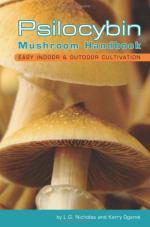|
This section contains 116 words (approx. 1 page at 300 words per page) |
Thisisanindole-type HALLUCINOGEN, found naturally with another hallucinogen in a variety of mushrooms—the most publicized being the Mexican or MAGIC MUSHROOM, Psilocybe mexicana, as well as other Psilocybe and Conocybe species. These mushrooms have long been consumed by Native Americans, especially in Mexico and the southwestern United States, as part of religious rites.
Psilocybin produces effects similar to LYSERGIC ACID DIETHYLAMIDE (LSD), but it is less potent and is metabolized in the body to form psilocin, another hallucinogenic compound. Both of these compounds have been synthesized in clandestine laboratories and made available on the streets.
 Figure 1 Psilocybin
Figure 1 Psilocybin
 Figure 2 Psilocin
Figure 2 Psilocin
See Also
Hallucinogenic Plants; Peyote; Plants, Drugs From)
Bibliography
WEIL, A. (1972). The natural mind. Boston: Houghton Mifflin.
|
This section contains 116 words (approx. 1 page at 300 words per page) |


